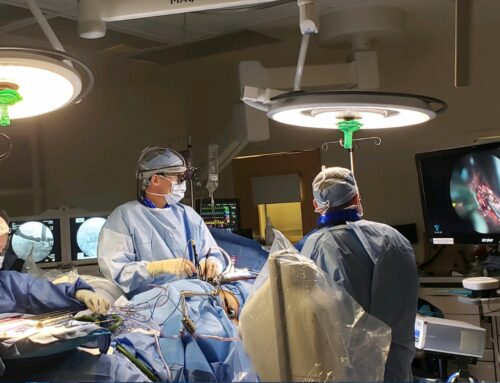Adoption of cloud technology in healthcare has been an uphill battle so far, with privacy, “data ownership” and recent investment in on-premise data centres top of US healthcare provider concerns. Imaging informatics has been behind the adoption curve for cloud, given the complex and critical importance of imaging within the care continuum. However, in the last 18 months, focus on cloud adoption in imaging informatics has notably increased, exacerbated further by the impact of COVID-19.
News of two acquisitions in the last month, Intelerad’s acquisition of Radius and Change Healthcare’s acquisition of Nucleus.io, are both underpinned by a strategic shift to capitalise on this trend. Below, we summarise the deals, provide our view on their market impact and discuss if cloud adoption in imaging informatics has finally reached the tipping point for more mainstream adoption.
Intelerad Acquires Radius
- Intelerad announced its acquisition of Radius, a Nashville, TN based private cloud provider, for an undisclosed sum on August 5th, 2020.
- Radius offers both public and private cloud-hosting and enterprise storage with specialist focus and in-house experience in the imaging informatics sector, with 18 employees and two data centre sites.
- The firms have already partnered on 15 customer deployments in the US.
- This is Intelerad’s second acquisition, following purchase of worklist vendor Clario Medical in November 2018. Intelerad was acquired by Hg Capital in January 2020.
The Signify View:
We have three main takeaways from the Intelerad Radius deal:
- Health provider focus is turning towards cloud, but a variety of deployment models from imaging IT vendors will be required to capitalise on this shift, especially in the outpatient and small community hospital customer segment.
- Large public cloud offerings from leading cloud providers such as Amazon, Microsoft and Google currently have limitations, namely accessibility, price or technical integration nuances for imaging IT applications.
- Intelerad is looking to leverage its recent investment and growing brand to offer products with more “elasticity” to suit client need; especially targeting traditional incumbent solutions from larger competitors slower to react to changing user demands.
Intelerad’s move to bring Radius in-house, given that the firms were already partners on some deals, shows increasing premium being placed on cloud technology expertise and assets in the market moving forward.
Intelerad has grown significantly in recent years, riding the enterprise imaging wave and often displacing legacy PACS solutions from incumbents slow to adopt a platform-focused approach to radiology IT. It has done especially well in the outpatient and small community hospital segment in the US, while also targeting larger acute providers after success at large Canadian acute hospitals and other international markets such as the UK. Based on this experience and fuelled by new investment from owners Hg Capital, it is clearly looking to stay ahead of the competition in cloud technology.
Intelerad has only a small proportion of its customers using hosted cloud deployments so far but expects to increase this share significantly in the coming years, accelerated by the Radius acquisition. By integrating Radius’ technology, Intelerad believes it can offer additional managed service options outside of just software. Given that total cost of ownership (TCO) for long-term deals is a growing factor in radiology IT procurement, particularly in the evolving outpatient segment.
Bringing a specialist imaging IT cloud vendor such as Radius in-house will also have some advantages, namely in product development and ensuring Intelerad’s product offerings and platform can in the future match the performance and functionality of on-premise deployments. Given there are relatively few firms with the same sector experience as Radius, Intelerad is getting a head-start on its competition. Radius also has experience working with Intelerad’s competitors on off-premise cloud implementations, experience that should help offer a competitive edge in future deals.
Once complete, Intelerad will be able to offer on-premise, off-premise private (via Radius) and off-premise public (via Amazon AWS) cloud offerings. Given health providers are yet to be fully convinced of public cloud offerings (particularly in relation to imaging IT), with lingering concerns over security, data ownership and long-term cost with non-healthcare specialists, the Radius deal fills a clear void in the Intelerad offering. It also plays well to the brand Intelerad is marketing, as a disruptive, flexible offering that can adapt to the specific needs of user groups, based on modularity and “elasticity” of solution.
We see this having most impact in the large radiology group customer segment, where TCO and cloud adoption score highly in vendor ranking for deals. Given this sector is also experiencing substantial consolidation, we expect to see more mid to large scale deals come to market in the near-term.
However, while the Radius deal does no harm to Intelerad’s broader efforts to penetrate the mid, large and academic acute health provider segment in the US, other barriers to entry remain. Most notably, its lack of best-of-breed diagnostic tools and advanced visualisation offerings will exclude the firm form some deals, especially given the focus of healthcare providers on supply chain consolidation.
Moreover, as is the case with many radiology IT vendors, Intelerad has not found a way to broaden its clinical reach into areas such as cardiology, pathology, oncology or surgery, an area its largest competitors already have substantial offerings or partnerships. Given that large health providers are focusing more on enterprise imaging strategies long-term, Intelerad will need a broader clinical offering or established partnership in place in order to cement itself as the foundation to large acute customers in the US market.
In the meantime, a successful implementation of Radius looks likely to improve its competitiveness in the smaller US customer segments near-term.
Change Healthcare Acquires Nucleus.io
- Change Healthcare announces acquisition of Nucleus.io for an undisclosed fee on 19th August 2020
- Nucleus.io includes cloud-based image exchange and cloud-based diagnostic viewer solutions; Nucleus Health will continue to run StatRad teleradiology business independently.
- The Nucleus.io product is reported to be live at 7,000 customer sites; the firm announced at RSNA 2019 (November 2019) capability of its Nucleus.io solution to offer native cloud “PACS-like” functionality.
The Signify View:
News broke that Change Healthcare had committed to roll-out of a new “cloud native” imaging IT platform with a select group of development customers at RSNA 2019 (November 2019). Timescales for a full roll-out to its large US customer base was unclear at the time. This prompting many industry commentators to suggest “cloud native” was a mere marketing ploy, intended to garner new interest for the Change Healthcare imaging IT portfolio still shaking off the legacy of its spin-off from McKesson.
The announcement of its acquisition of Nucleus.io last month, a relatively small image exchange and universal viewing vendor, has signalled Change Healthcare is in fact very serious in its push to transition to the cloud.
Nucleus.io has gradually built a solid customer base in the outpatient and radiology reading group market, leveraging its longer running StatRad teleradiology business as a development bed for product roll-out and product showcasing. It was also one of the first in the industry to embrace cloud-only deployment, with a strong partnership with Microsoft Azure as the core of its platform architecture.
We see four main takeaways from this deal for Change Healthcare and the wider industry:
- Change Healthcare is in for the long-haul in terms of investment and R&D to “cloud enable” its existing imaging IT solutions and is banking on early mover advantage to pay-off mid-term.
- The addition of Nucleus.io will round out the Change Healthcare portfolio (added image exchange and universal clinical viewing capability), strengthening its offering for competition in major acute hospital procurement against leading competitors Philips, GE Healthcare, Sectra, Agfa, Fujifilm and Visage.
- The consolidation of image exchange, image storage and universal viewing into larger imaging IT platforms is progressing at pace (exemplified further by the recent merger of Mach7 Technologies and Client Outlook, completed July 2020). This is a clear reflection of healthcare providers’ increasing focus and demand for more integrated, streamlined and less complex procurement for imaging IT.
- Key market competitors are addressing the growing interest in cloud adoption with a variety of partial solutions and associations with public cloud vendors. Today, none have a complete cloud-native imaging IT portfolio that can offer comparative or better performance versus traditional on-premise offerings.
Change Healthcare has clearly nailed its colours to the mast in a quest to be the first of the major imaging IT vendors to be able to offer a full-featured diagnostic imaging IT solution on the cloud.
First-mover advantage will offer some benefits, including the visibility and brand uplift for forging an innovative path towards new technology adoption. Healthcare providers are also increasingly focused on Total Cost of Ownership (TCO) for imaging IT in these increasingly economically challenging times. Cloud-hosted solutions make a resounding case for longer-term economic efficiency versus on-premise for most customers, though clear evidence has been limited so far. Competitively, this latest move also puts further pressure on its peers to gear up for a future market that clearly long-term will be cloud-based.
However, first-mover advantage also comes with some challenges. Most health providers today are some way from fully committing to off-premise solutions, in part a hangover from the huge scrambling investment in private data centres networks on the back of the EMR-focused Meaningful Use/MACRA regulatory changes. Cloud adoption from major acute EMR vendors has also been sluggish, not helped by the recent Epic Systems pull-out of a partnership with Google Cloud. This will only further exacerbate the data ownership and patient data security concerns that healthcare providers have in relation to public cloud.
Change Healthcare also has further heavy lifting to do itself to be ready for a roll-out; currently it has cited “cloud enablement” of its archiving and analytics modules, creating a solid foundation for further R&D architecture development. However, it is the core imaging diagnostic modules, workflow and advanced visualisation modules that will be the most complex to transition. This is also its highest area of risk; Change has a strong reputation for depth and breadth of offering in core radiology and diagnostic offerings, so expectations will be high. Nucelus.io will also round out the portfolio with image exchange and universal viewing, though it is founded on the Microsoft Azure cloud, whereas Change Healthcare has so far based its cloud offering on Google Cloud; further work will therefore be required to consolidate and integrate the new assets.
Overall, Change Healthcare has been bold in its focus on transition towards cloud-deployment for imaging IT. Based on our ongoing market analysis, we broadly agree that cloud is the long-term direction for imaging informatics in the US, with growth in cloud deployment particularly evident in the outpatient imaging sector today and over a third of imaging IT deals expected to come from hybrid or hosted solutions by 2024.
However, whether the large acute hospital market is quite ready for large-scale cloud adoption remains to be seen; given replacement cycles for imaging IT deals are stretching into ten year deals and beyond, the likely rate of cloud transition for the market is going to be gradual at best.
For Change Healthcare three questions remain:
- Can a first-mover convince enough existing customers to transition to cloud ahead of the curve to justify the substantial investment?
- How long will it take the firm to provide a fully featured off-premise platform for imaging IT that includes the new Nucleus.io assets?
- Will cloud-deployment for a fully-feature imaging IT solution be enough to win new customers at the cost of its main competitors?
At this stage, it is perhaps too soon to provide a definitive answer, though it is clear Change Healthcare still has some work to do before it is ready for a full-scale cloud-based platform roll-out. But as the Intelerad and Change Healthcare acquisitions both show, cloud adoption for imaging IT is a topic that will be increasingly important.












